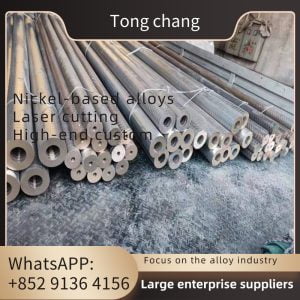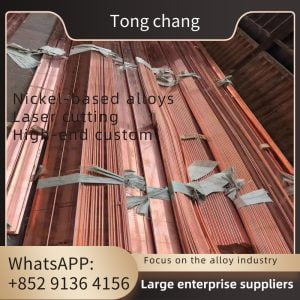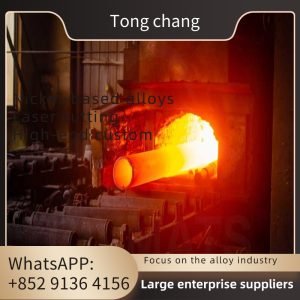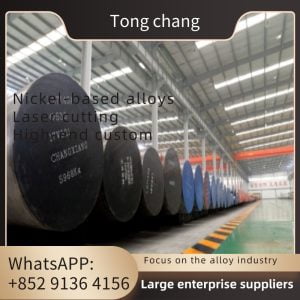| Product Name: | Stainless Steel Elliptical Head | Standard: | ASTM A240 / ASME SA240 |
|---|---|---|---|
| Material: | 304, 304L, 304H, 316L, 321, Etc. | O.D.: | 89mm To 10000mm |
| W.T.: | 2mm To 300mm | Technics: | Forged |
| Forming Method: | Hot Forming, Cold Forming | Applications: | Oil/chemical Industry, Water Conservancy, Electric Power, Boiler, Pressure Vessel Etc. |
| High Light: | Heat Exchanger Stainless Steel Elliptical Head, Pressure Vessel Stainless Steel Elliptical Head, SA240 Stainless Steel Elliptical Head | ||
ASME SA240 321 Stainless Steel Elliptical Head Dish End For Pressure Vessel And Heat Exchanger
At the temperature of 800-1500°F(427-816°C), chromium carbide precipitation conditions can still maintain good resistance to intergranular corrosion. Due to the addition of titanium to the composition, 321 alloy can still maintain stability in the case of chromium carbide formation.
321 alloy stainless steel has the advantage of working in high temperature environment due to its excellent mechanical properties. Compared with 304 alloy, 321 alloy stainless steel has better ductility and stress fracture resistance. In addition, 304L can also be used to resist sensitization and intergranular corrosion.
Alloy 321(UNS S32100) is a very stable stainless steel. At the temperature of 800-1500°F(427-816°C), chromium carbide precipitation conditions can still maintain good resistance to intergranular corrosion. Due to the addition of titanium to the composition, 321 alloy can still maintain stability in the case of chromium carbide formation. Alloy 347 is due to the addition of COQ and tantalum to maintain its stability. .
321 and 347 alloys are commonly used for long-term operations at high temperatures between 800 and 1500°F(427 and 816°C). If the application only involves welding or short time heating, 304L can be used instead.
The high temperature operating advantages of 321 and 347 alloys also depend on their good mechanical properties. Compared with 304, 304L, 321 and 347 have better creep stress resistance and stress rupture resistance. This allows these stable alloys to meet ASME Boiler Code and pressure vessel specifications at slightly higher temperatures. As a result, 321 and 347 alloys can be used up to 1500°F (816°C), while 304,304 L is limited to 800°F (426°C).
Equivalent Grades
| Grade | UNS No | Old British | Euronorm | Swedish SS | Japanese JIS | ||
|---|---|---|---|---|---|---|---|
| BS | En | No | Name | ||||
| 321 | S32100 | 321S31 | 58B, 58C | 1.4541 | X6CrNiTi18-10 | 2337 | SUS 321 |
Chemical Compositions
| Grade | C | Mn | Si | P | S | Cr | Mo | Ni | N | Other | |
|---|---|---|---|---|---|---|---|---|---|---|---|
| 321 | min. max | – 0.08 | 2.00 | 0.75 | 0.045 | 0.030 | 17.0 19.0 | – | 9.0 12.0 | 0.10 | Ti×5(C+N) 0.70 |
Mechanical Properties
| Grade | Tensile Strength (MPa) min | Yield Strength 0.2% Proof (MPa) min | Elongation (% in 50 mm) min | Hardness | |
|---|---|---|---|---|---|
| Rockwell B (HR B) max | Brinell (HB) max | ||||
| 321 | 515 | 205 | 40 | 95 | 217 |
Physical Properties
| Grade | Density (kg/m3) | Elastic Modulus (GPa) | Mean Coefficient of Thermal Expansion (μm/m/°C) | Thermal Conductivity (W/m.K) | Specific Heat 0-100 °C (J/kg.K) | Electrical Resistivity (nΩ.m) | |||
|---|---|---|---|---|---|---|---|---|---|
| 0-100 °C | 0-315 °C | 0-538 °C | at 100 °C | at 500 °C | |||||
| 321 | 8027 | 193 | 16.6 | 17.2 | 18.6 | 16.1 | 22.2 | 500 | 720 |
321 stainless steel is Ni-Cr-Mo austenitic stainless steel, its performance is very similar to 304, but due to the addition of titanium metal, so that it has better resistance to grain boundary corrosion and high temperature strength. Due to the addition of titanium metal, it effectively controls the formation of chromium carbide.
321 austenitic stainless steel has good corrosion resistance in the atmosphere and is widely used in petrochemical, electric power, bridge and automobile industries. However, the "stainless steel" is not absolute, due to the special service environment, stainless steel will also corrosion. Medium concentration, pH value, temperature and other factors will have a greater impact on the corrosion resistance of stainless steel. For example, in the sensitization temperature range of 450~850℃ for a long time, stainless steel will occur intergranular corrosion. The mechanism is that C combines with Cr at the grain boundary to form Cr23C6 and precipitates, so that the Cr content at the grain boundary is reduced, which is the so-called "chromium poor". The Cr element is one of the main elements to inhibit intergranular corrosion, when the Cr content at the grain boundary is less than 12%, the probability of intergranular corrosion will be increased.
Applications:
Oil and gas industry equipment
Offshore platforms
Heat exchangers
Underwater equipment
Fire fighting equipment
Chemical processing industry
Utensils and pipes industry
Desalination, high pressure RO equipment and submarine pipeline
Energy industry such as power plant desulfurization and denitrification FGD system, industrial washing system, absorption tower
Mechanical parts (high strength, corrosion resistance, wear resistance parts)







